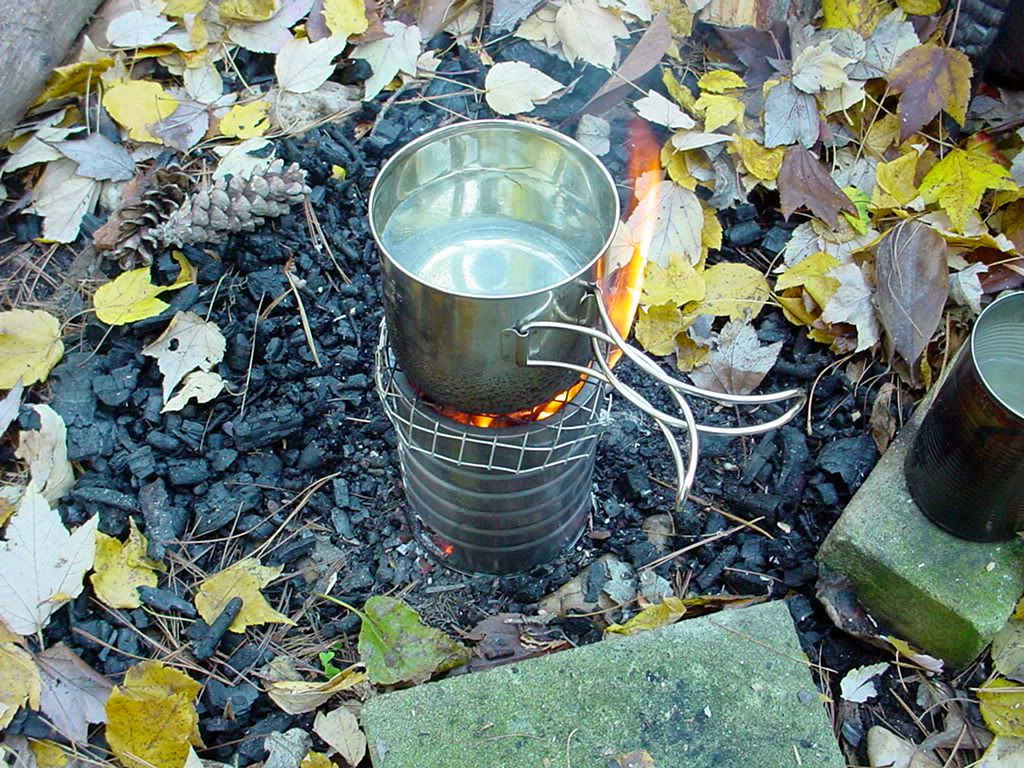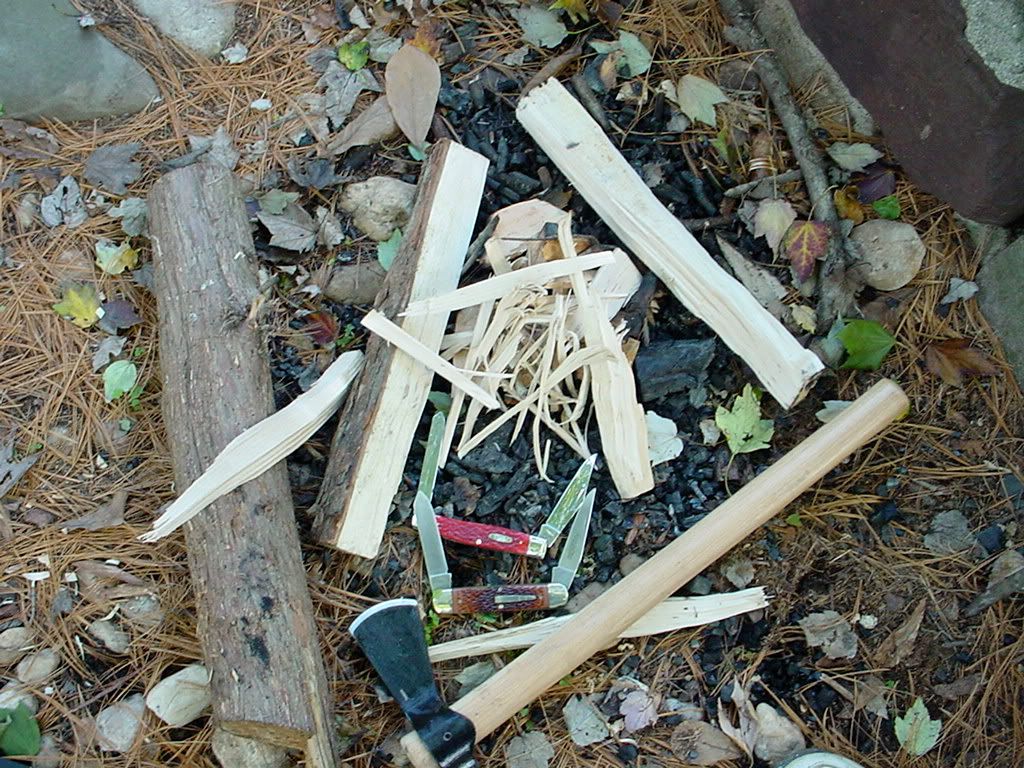
(Photo from Esbit's website.)
Esbit stoves have been made in Germany since 1936. I bought mine sometime ago from REI. They are simple little units made from stamped steel. Esbit fuel is tablets made from hexamine but you can also burn USGI trioxane bars. When folded, the stove folds up to about 4" x 3" x 1", and weighs a few ounces. The folded stove also acts as a container for carrying fuel tabs.
To use the stove, unfold it, place a fuel tablet in the center, and light. You can open the stove partway to accomodate a smaller cup, or all the way to hold a pot.
Performance of the stove is OK, but not great. It's mainly useful for warming field rations or water for tea or soup. You're not going to get a rolling boil on just one hexamine tab.
However, you can increase the heat output by adding other solid fuel along with the hexamine. E.g., today I was able to get my broth boiling by adding just a few dry twigs about as big around as my middle finger. Of course, using a cover on your cup or pot will help as well.
I've read that one can light the hexamine tabs with sparks from a ferrocerium rod, especially if you scrape some off and make a pile of powder on the tab. I tried this today with a Swedish Fire Steel but couldn't get it to work. Not wanting to resort to a match or lighter, I dug into my possibles bag and got out some dryer lint. A small wad of this on top of the hexamine tab was easy to light with a couple strikes, and this in turn ignited the hexamine.
Another use for the Esbit fuel tabs is as fire starter. The hexamine burns at about 1400 degrees F. and since it does so for over ten minutes it'll get even wet wood burning.
I keep an Esbit stove and fuel in my possibles bag, and another in the get home bag in my truck. They are small, light, easy to use, pretty much foolproof, and cheap. For a quick warm meal on the trail they work well. They get two thumbs up from me.














